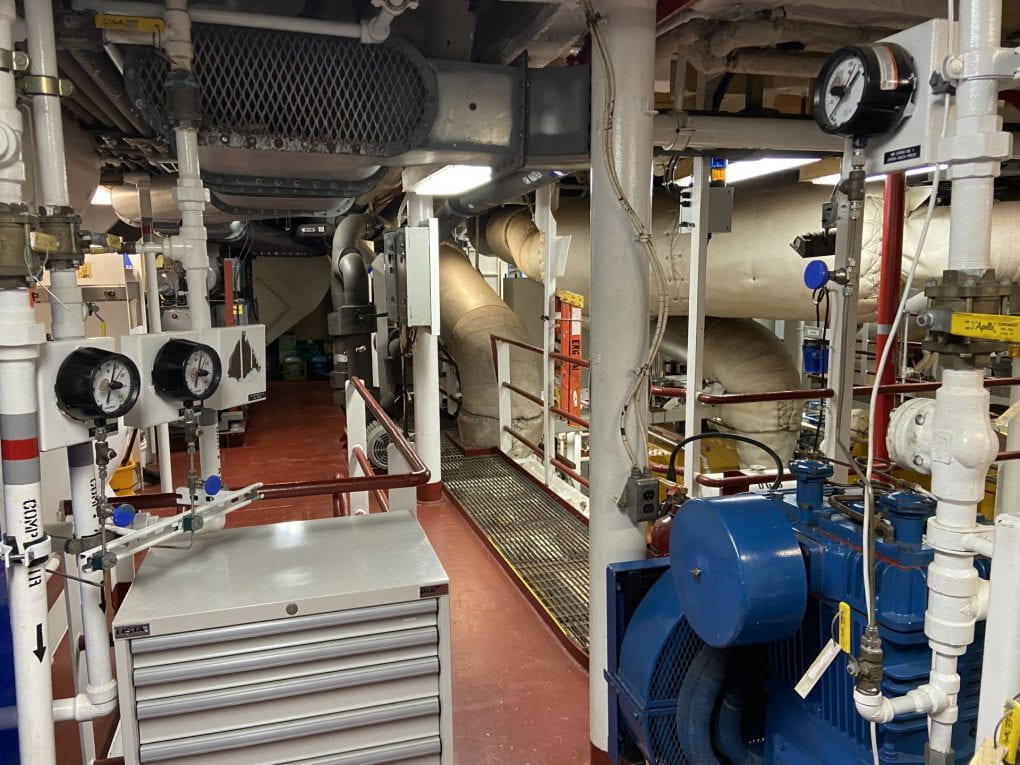June 17th, 2021
All good things must come to an end, and today marks the last day of our research cruise. Early this morning we recovered Sentry for the last time and began our transit to Gulfport, Mississippi, where we are departing the Thomas G. Thompson. It has been such a privilege to work with both the ROV Jason and the AUV Sentry throughout this past month. Without their help we wouldn’t have been to conduct such incredible science to answer our research questions about cold seep larval dispersal. While working with Sentry, we would bring up water samples and sort through them to identify different larval types. In total, we found 232 different types of larvae, and found 1,885 total larval individuals with the SyPRID sampler. To collect these larvae, we sieved through the equivalent of 30 seconds of water gushing over the Niagara Falls in total. Our collections would happen right above the seafloor, and then a midwater depth both onsite and offsite. While we sorted through these samples, Sinja Rist would take pictures of the larvae we found and determine whether or not the individual was part of a new morphotype. In this picture you can see we would print out the larval types and put them around the microscopes for reference. We ended up having a beautiful gallery of Atlantic and Gulf of Mexico larvae that we found during this cruise.

With our Sentry samples completed, we shifted our focus to finishing the samples collected by Jason. We dissected and preserved our final mussels. We sorted our final biobox samples, larval tube trap samples, and Technicap samples. Just like that we had come to an end of our science at sea. Having the opportunity to work closely with such exotic species and conduct deep sea research has been incredible. As students we’ve learned so much about the scientific process in practice. We developed our lab and field skills, we experienced the importance of scientific collaboration, and we were able to work with career scientists and engineers while building a community. To commemorate this impactful month at sea we took a group photo on the bow of the TGT.


With the rest of the night ahead of us, we began packing up all our equipment and making arrangements for shipping our gear along with specimens returning to our home labs. While we were involved in a complex Tetris game to get everything to fit in boxes, our minds were reflecting on the experiences we gathered while at sea. In the name of science we all worked incredibly hard in the past month, forgoing adequate sleep, having limited contact with the outside world or our loved ones, and missing events and milestones in our own lives. In return we gathered so much data, built strong relationships, acquired applicable marine science skills, worked with high-end submersibles, and saw things many don’t get to see in their lives. This was such a unique and impactful experience. If I’m saying it a lot, it’s because it’s true!
We made sure to take time to appreciate the final sunset on board, and we were also lucky enough to get a tour from one of the engineers on board to see behind the scenes of the ship. For a vessel that spends months at sea at a time, the ship has all the systems necessary for smooth sailing. As we went through the engine room we were shown the various systems that make life at sea possible. But first we had to put earplugs in because it’s extremely loud inside! In the engine rooms we observed the cooling systems that allow us to survive the heat of the Gulf. We were shown the reverse osmosis machine that converts seawater into available freshwater. We got to see the large engines that allow for our dynamic positioning to hover above site. We also saw the Z-drive that powers the propellers on the back of the ship. At the end we got to see the control room, where all the power in the ship is diverted. There’s enough power on this vessel to run a small town! During this tour we also learned some cool trivia! This vessel can travel at maximum 16.7 knots and can hold 280,000 gallons of fuel! Tomorrow we begin flying home, but it was a great way to end our time with the Thomas G. Thompson by exploring how this ship made everything possible!






This post is a lifesaver for students grappling with assignment woes! The mention of Assignment Help is a game-changer, offering a reliable solution to academic challenges. As a student myself, I can attest to the stress that comes with tight deadlines and complex assignments. The prospect of having professional assistance tailored to the Canadian academic landscape is incredibly reassuring. The emphasis on a specialized service for Canadian students reflects an understanding of the unique academic requirements. This recommendation is a beacon for those seeking effective support, ensuring a smoother academic journey. Kudos for sharing this invaluable resource!
Your narrative is more than a report on a research basis. it’s an amazing story of exploration, discovery, and personal research. Your journey was a transformative educational experience and can be helpful for instant help with assignments. Thank you for sharing this incredible journey with us.
As one of the top Best Schools OF Gurgaon, we prioritize creating a safe, supportive environment where every student can excel. The well-being of our students is at the forefront of our mission, and we foster a welcoming, inclusive atmosphere where every child feels valued and supported. Our dedicated faculty provides personalized attention to ensure that each student receives the care and assistance they need to succeed.